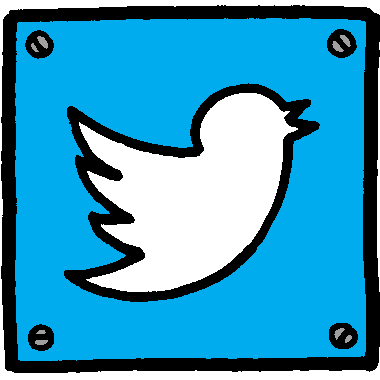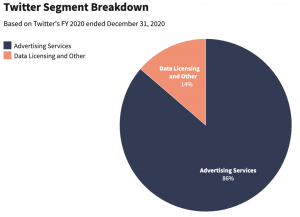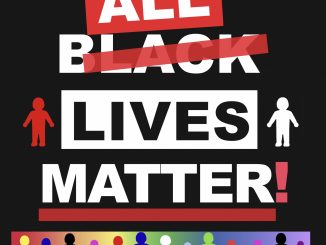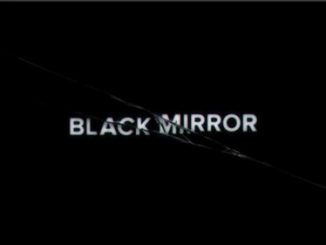
Imagine a scenario where everyone is able to share their thoughts, in short messages, to a big audience. Around this time, 15 years ago, the Internet community was granted the luxury to do so through the introduction of Twitter. Twitter was founded in 2006 by four individuals with the goal of using short text messages, called Tweets, to communicate with groups of friends (MacArthur, 2020). Since then their user base kept growing, with 206 million monetizable daily users worldwide as of July 2021 (“Leading countries based on number of Twitter users as of July 2021”, 2021).
When a significant event occurs, Twitter is always the first platform people turn to, to keep them updated. One of the examples is to keep up with news-breaking Tweets from politicians and celebrities. This is the reality of how we consume news at present, where in the past, people would rely on word of mouth or newspapers and television for breaking news (Davis, 2021).
Twitter’s Advertising Services

For Twitter, the selling of advertising services accounts for its vast majority of income, while data licensing and other services account for the remaining small percentage (Reiff, 2021). In 2020, advertising services acquired $3.2 billion in income, accounting for about 86 percent of Twitter’s total revenue. In comparison to the previous year, the segment’s revenue increased by 7.1% (Reiff, 2021). Majority of their advertising revenue is earned by selling promoted goods to marketers, which include sponsored tweets, promoted accounts, and promoted trends. Many Twitter users pay to have their accounts promoted so that they appear as top recommendations in order to improve their exposure and number of followers.

First View and Promoted Trends are two of its mass awareness solutions, which enable marketers to optimize reach and engage with their most important audiences at the right times (“Create Engagement”, n.d.). In order to optimize exposure, First View gives advertisers first access to logged-in users’ first impression of the day, as well as additional impressions sent throughout the day. As part of the Promoted Trends program, your business may take over the top trends list for 24 hours. They are a high-impact location for your message that helps to raise awareness, encourage user discovery, and grow your campaign across Twitter (“Create Engagement”, n.d.). To ensure their ad-supported products appear in the feeds of correct individuals, on “Who to Follow” lists, or on a global or country-specific list of trending topics throughout the day, Twitter uses an algorithm to tailor advertising opportunities (Reiff, 2021).
In that sense, its business model is almost identical to Facebook’s. Both businesses engage in a rapidly expanding digital advertising sector as consumers increasingly consume information online rather than via traditional media such as television, newspapers, or magazines (Kalogeropoulos, 2017).
Toxicity surrounding the platform
Over the past 12 years, Twitter has evolved into a platform that people use for both professional and personal reasons. From human rights activists arranging protests online, minority groups finding their communities, and the former POTUS making policy announcements and critisizing the media – Twitter has been an open and welcoming space for many. On the other hand, Matamoros-Fernández (2017) has focused on the uncontrolled nature of racism on numerous social media platforms.
Women see Twitter as a place where violence and abuse against them may thrive, with little or no responsibility for perpetrators. By not reviewing and reacting to complaints of violence and abuse in a transparent way, Twitter is failing in its corporate duty to protect women’s rights online. An Amnesty International report from 2018 outlined the amount of harassment aimed at female Twitter users, portraying the platform as “a toxic environment for women” (Walsh & Baker, 2021). Mainly, the study criticized Twitter for failing to uphold women’s rights and for not transparently handling complaints of abuse. In a public statement, Twitter has admitted that they emphasized that they have a long way to go in addressing the issue of gender-based violence and abuse on its platform (“Toxic Twitter – A Toxic Place For Women”, n.d.).
In 2017, CEO Jack Dorsey said,
“We see voices being silenced on Twitter every day. We’ve been working to counteract this for the past 2 years…We prioritized this in 2016. We updated our policies and increased the size of our teams. It wasn’t enough.” — Jack Dorsey, CEO at Twitter (“Toxic Twitter – A Toxic Place For Women”, n.d.).
Other than the platform being a toxic place to women, it also has a huge toxicity effect towards black and indigenous people. A number of black and indigenous athletes, including Adam Goodes, Glen Kamara, and Lewis Hamilton, have been the targets of racist tweets and have demanded on Twitter to do more to address the issue (Walsh & Baker, 2021).
Awareness of social & cultural issues arising from networked change
It is because of the low barriers to entry on the Web, more people may get access to creative or even revolutionary ideas, at least among the increasing portion of the population that has access to a computer or other electronic device (Jenkins, 2006). The use of social media platforms like Twitter has grown in importance as the world is becoming more interconnected through the Internet. Online environments and social media platforms like Twitter, however, are not immune to many of the human rights violations that women experience on a daily basis in the real world. Numerous women questioned by Amnesty International expressed their concerns with the fact that the internet world, in general, has created environments in which individuals feel empowered to say things to others that they would not normally say in person (“Toxic Twitter – A Toxic Place For Women”, n.d.).
References
Andrews, T. (2021). Commander in tweets. The Washington Post. Retrieved from https://www.washingtonpost.com/graphics/2020/technology/trump-twitter-tweets-president/.
Bouvier, G. (2020). Racist call-outs and cancel culture on Twitter: The limitations of the platform’s ability to define issues of social justice. Discourse, Context & Media, 38, 1-11. https://doi.org/10.1016/j.dcm.2020.100431
Create Engagement. Twitter Marketing. Retrieved from https://marketing.twitter.com/en/solutions/create-engagement#expanding-reach.
Davis, B. (2021). How was news spread in the past?. Mvorganizing.org. Retrieved from https://www.mvorganizing.org/how-was-news-spread-in-the-past-2/.
Downey, L. (2021). Algorithm. Investopedia. Retrieved from https://www.investopedia.com/terms/a/algorithm.asp.
Jenkins, H. (2006). Convergence culture: Where old and new media collide (p. 210). New York University Press.
Kalogeropoulos, D. (2017). How Twitter Inc. Makes Most of Its Money. The Motley Fool. Retrieved from https://www.fool.com/investing/2017/08/15/how-twitter-inc-makes-most-of-its-money.aspx.
Kenton, W. (2021). Tailored Advertising. Investopedia. Retrieved from https://www.investopedia.com/terms/t/tailored-advertising.asp.
Leading countries based on number of Twitter users as of July 2021. Statista. (2021). Retrieved from https://www.statista.com/statistics/242606/number-of-active-twitter-users-in-selected-countries/.
MacArthur, A. (2020). The Real History of Twitter, in Brief. Lifewire. Retrieved from https://www.lifewire.com/history-of-twitter-3288854.
Matamoros-Fernández, A. (2017). Platformed racism: the mediation and circulation of an Australian race-based controversy on Twitter, Facebook and YouTube. Information, Communication & Society, 20(6), 930–946. https://doi.org/10.1080/1369118X.2017.1293130
Reiff, N. (2021). How Twitter Makes Money. Investopedia. Retrieved from https://www.investopedia.com/ask/answers/120114/how-does-twitter-twtr-make-money.asp.
Toxic Twitter – A Toxic Place For Women. Amnesty International. Retrieved from https://www.amnesty.org/en/latest/research/2018/03/online-violence-against-women-chapter-1/.
Walsh, M., & Baker, S. (2021). Twitter’s design stokes hostility and controversy. Here’s why, and how it might change. The Conversation. Retrieved from https://theconversation.com/twitters-design-stokes-hostility-and-controversy-heres-why-and-how-it-might-change-166555.


